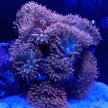LFS Update and Shipments - 03 Aug to 09 Aug 09
-
Topics
-
Latest Update
-
-
3
-
-
3
Clearing Space - Selling RBTA
Hi.. interested in the RBTAs. Do contact me at 87206036 -
2
Corals to sell/give
Zoa with GSP sold. All GSP collected. Sent from my FCP-N49 using Tapatalk
-







Recommended Posts